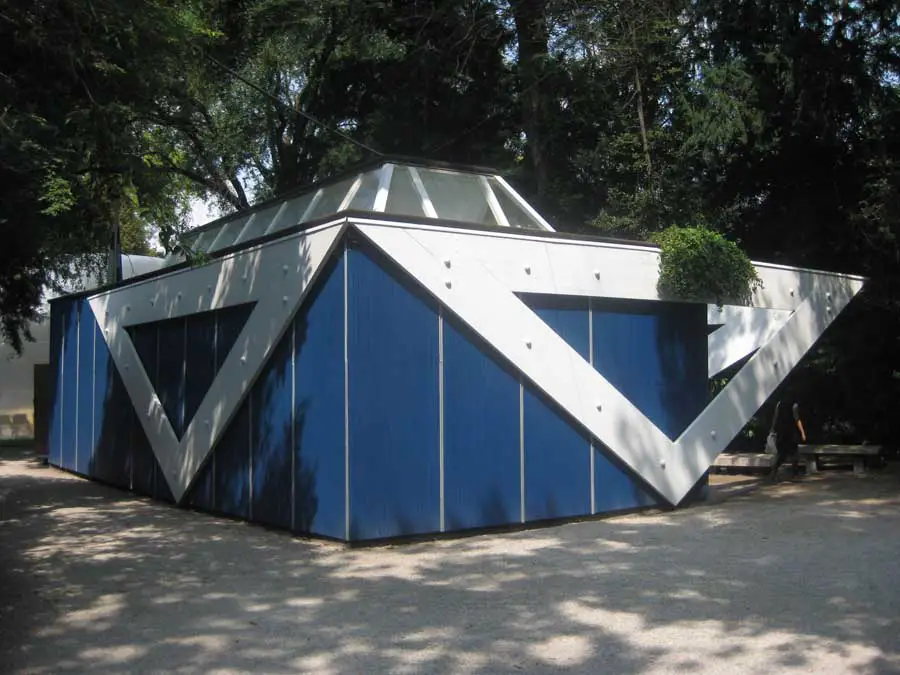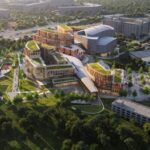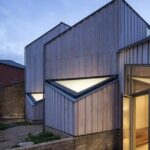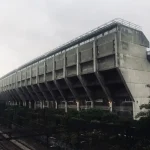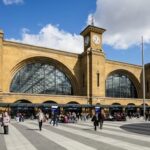Pitzhanger Manor, Walpole Park, PM Gallery London, Soane Building
Pitzhanger Manor London : Walpole Park
Museum Building in Ealing, west London, England, UK
23 Apr 2014
Pitzhanger Manor Exhibition
Reason & Intuition – Alvar Aalto & Ola Kolehmainen in Soane
PM Gallery & House
4 July – 24 August 2014
Finnish art, architecture, design and photography fills Soane’s dream house this summer
Pioneering design by Alvar Aalto and breathtaking architectural photography by Ola Kolehmainen.
This summer, the art, architecture and design of Finland will be celebrated in London. Reason & Intuition – Alvar Aalto & Ola Kolehmainen in Soane is a new exhibition bringing together the finest works of an acknowledged great of international modernist architecture and design and three collections of images by an acclaimed Finnish photographer.
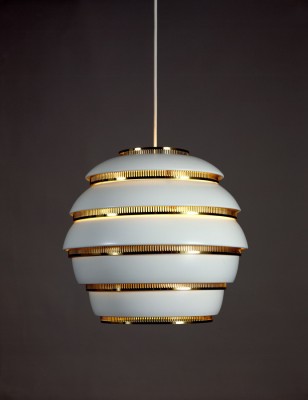
Alvar Aalto Beehive © Maija Holma Alvar Aalto Museum
Reason & Intuition runs from 4 July – 24 August 2014 at PM Gallery & House. Sitting in Walpole Park, central Ealing, the Gallery is the extension to one of Sir John Soane’s great architectural treasures, Pitzhanger Manor, the ‘dream house’ designed by Soane as a place to entertain his friends and display his collection of art and antiquities. The exhibition is a collaboration between PM Gallery & House, the Alvar Aalto Museum and the Finnish Institute in London.
Alvar Aalto (1898-1976) was a central figure in international modernism. His sculptural, and highly functional, furniture produced in the 1930s remains influential and very popular.
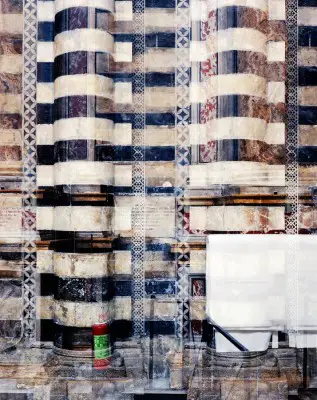
Duomo Di Siena © Ola Kolehmainen, courtesy of Gallery Taik
Reason & Intuition will feature around forty Aalto creations, including chairs, tables, lights, glassware and textiles, as well as rarer pieces, such as a collection of original designs and plans for some of Aalto’s 500 buildings and glassware designed by his first wife and collaborator, Aino.
Visitors to the exhibition will be able to sit at an Aalto table, on Aalto chairs and pore over his original designs, photographs and plans for private houses, such as the extraordinary Villa Mairea, which was designed to emulate a Finnish forest. Aalto’s design for the 1939 New York World’s Fair offered another spellbinding forest stroll, provoking Frank Lloyd Wright to publicly acclaim the ‘genius’ of Aalto’s work.
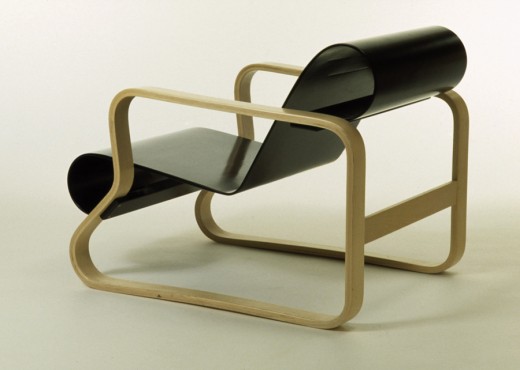
Alvar Aalto Paimaio Chair © Maija Holma Alvar Aalto Museum
While Aalto’s early work adopted a classical approach, his international reputation grew with his move to modernism, exemplified by the Viipuri Library (1927-35) and Paimio Sanatorium (1928-33). The UK was also important to Aalto, with his first major exhibition success coming with a display at Fortnum & Mason in 1933.
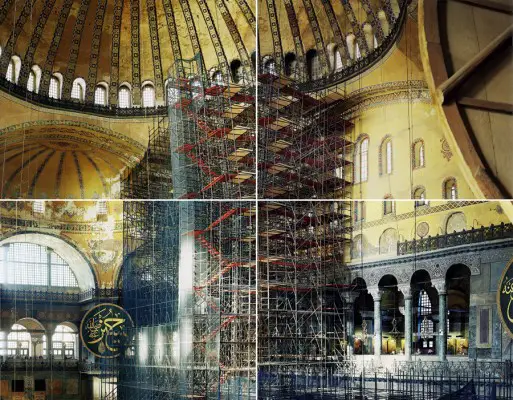
Hagia Sophia Year 537 © Ola Kolehmainen, courtesy of Gallery Taik
Aalto regarded each building as a total work of art and his design skill reached into every corner. When designing the Paimio Sanatorium, for example, he took the perspective of a patient to every inch of the project, creating the furniture as well as the building in which it was contained.
No detail escaped Aalto as he strove to provide a helpful environment for the patients – from the cheerful canary yellow paint on the stairs to the specially modified taps which poured silently to avoid disturbing patients. The all-encompassing Sanatorium work became an inspiration for Aalto’s subsequent focus on furniture design.
Venice Biennale Finnish Pavilion, Giardini, Venice, Italy by architect Alvar Aalto:
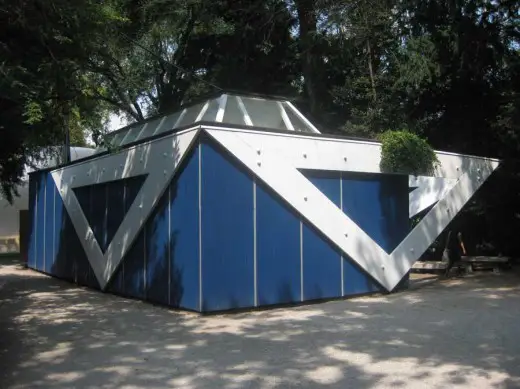
photograph © Adrian Welch
Aalto devoted much time to experiments with wood and attempts to make it behave in new ways. His curved plywood chairs became something of a trademark and a clear influence on designers like Charles and Ray Eames.
Among the masterpieces of Finnish design that will feature in the exhibition, the Paimio Chair (1931-2) is a combination of moulded wood and plywood, with the chair back originally set at an angle to ease the breathing of tuberculosis patients.
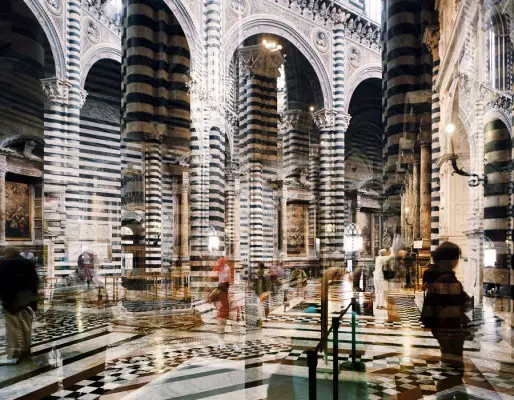
Duomo Di Siena © Ola Kolehmainen, courtesy of Gallery Taik
Also included will be the sculptural Beehive ceiling lamp, an enduringly popular item and the Savoy Vase, with its distinctive wave design, which was made for the Paris World’s Fair in 1936. Aalto’s three-legged stackable Stool 60 is deceptively simple and much-copied, the epitome of functional furniture design, with bent legs which were to become a distinctive feature of his furniture (the Stool 60 may be familiar today from its use in Apple stores worldwide).
The exhibition aims to be an architectural conversation across time, with Aalto’s furniture and building designs finding a home in the rooms Soane built for himself as an advertisement for his skills as an architect. Pitzhanger contains some of Soane’s most impressive interiors, with vaulted ceilings, interconnecting rooms, inset mirrors, domed ceilings and stripped back classical detailing.
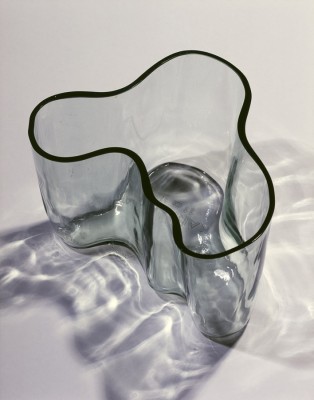
Alvar Aalto Savoy Vase © Maija Holma Alvar Aalto Museum
As Aalto’s work fills Pitzhanger, three distinct collections of Ola Kolehmainen (1964-) photography will take over PM Gallery: his acclaimed, abstract, Aalto-influenced architectural images (featuring some Aalto buildings), as well as new work exploring the Siena Cathedral in Italy (a building highly regarded by Aalto) and the most significant mosques in Istanbul.
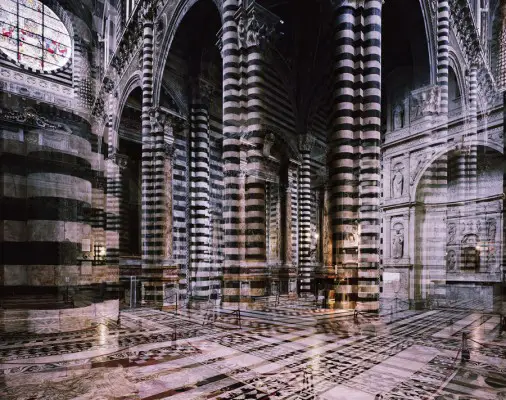
Duomo Di Siena © Ola Kolehmainen, courtesy of Gallery Taik
Kolehmainen’s photographs depict sections of buildings, examining the strictly ordered rows of repetitive patterns and elements of symmetry. Reflections are significant in Kolehmainen’s work and a way of bringing the warmth of the natural world into man-made structures; trees, clouds and people are all reflected on the surfaces of buildings, in swimming pools and inside the Siena Cathedral.
The works are produced using the Diasec process, which means that the environment is reflected in the surface of the photos as well as in the images themselves – a calculated component of his work.

Hagia Sophia Year 537 © Ola Kolehmainen, courtesy of Gallery Taik
The complex new images are theatrical and epic in scale, with a nod to architectural history and even classical painting. Kolehmainen’s work in Istanbul was a particular departure for a photographer who previously had not concentrated on any building built before 1920. Both the Siena and Istanbul works have at their heart the volume of the buildings and the task of depicting the empty spaces within the structures. This became Kolehmainen’s new challenge and a personal departure.
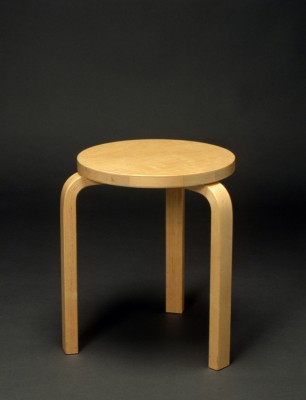
Alvar Aalto Stool 60 © Maija Holma Alvar Aalto Museum
Carol Swords, Gallery Programmer, said “The shared preoccupations of architects Soane and Aalto and the artist Kolehmainen will slowly reveal themselves in the exhibition. It’s clear that all three men understand the power of the senses and the impact of the outside world on an art work or building.
The reflections, which are so much a part of Kolehmainen’s work, illustrate that buildings and art do not exist alone, they are rooted firmly in this world and, in particular, all three men recognise the prominence of the natural world.”
Finlandia Hall, Alvar Aalto building in Helsinki, on left:
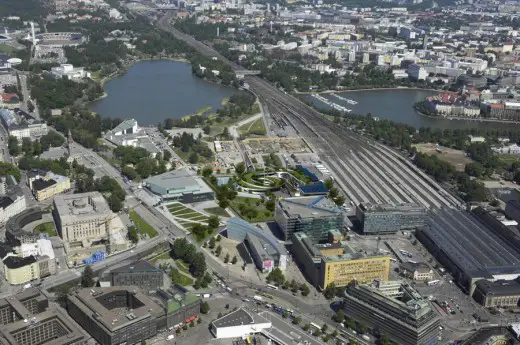
24 Mar + 13 Jan 2014
Pitzhanger Manor Recent Exhibition
Living Laboratory: Richard Pare on Le Corbusier and Konstantin Melnikov
PM Gallery & House
21 March – 11 May 2014
Extraordinary modernist buildings explored
The works of two great architects and one exceptional British photographer are celebrated in a new exhibition that opened in London on 21st March. The buildings of two of the most influential modernist architects – Le Corbusier and Konstantin Melnikov – are examined in a show devoted to the photography of Richard Pare.
Notre Dame du Haut chapel, Ronchamp, 1951-22. Panoramic view © Richard Pare, 2011

Living Laboratory: Richard Pare on Le Corbusier and Konstantin Melnikov runs from 21 March–11 May 2014 at PM Gallery & House in Ealing, west London. Sitting in Walpole Park, central Ealing, the Gallery is the extension to one of Sir John Soane’s great architectural treasures, Pitzhanger Manor, the ‘dream house’ designed by Soane as a place to entertain his friends and display his collection of art and antiquities.
Villa Savoye, Poissy, 1929-30. General view in the site © Richard Pare, 2012
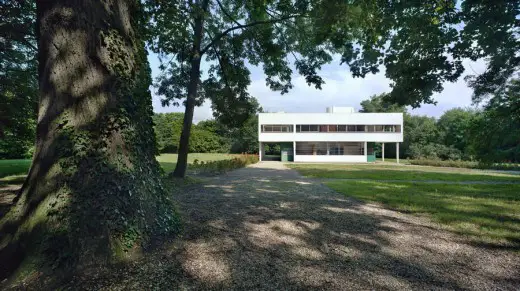
Richard Pare’s fascination with modernist architecture shines through his vast collection of images taken over several decades. Living Laboratory will illustrate how he photographs buildings, taking care to reveal both their many subtleties and magnificent monumentality. Pare’s perceptive point of view brings into play dramatic use of light, (always achieved with no supplemental lighting) as well as varied weather conditions and seasons.
Notre Dame du Haut chapel, Ronchamp, 1951-22. View towards the east © Richard Pare, 2011
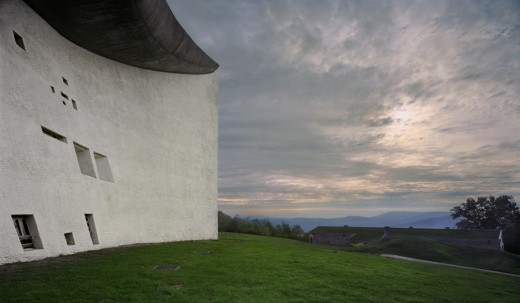
To achieve his images he deploys a wide range of technical approaches, combining conventional film and a view camera with the latest advances in digital image making. These state-of-the-art aspects of his work serve to highlight the majesty of his subjects without in any way overwhelming the purposes of the undertaking.
He is also attentive to the effects of the passage of time and changing social conditions on the works he chooses to portray. The absence of human beings, coupled with signs of wear and decay, including creeping vegetation and the lingering evidence of past eras, emphasise the impermanence of seemingly solid structures and their struggle for survival.
High Court, Chandigarh, Punjab, India, 1952-56. View of the main hall © Richard Pare, 2012
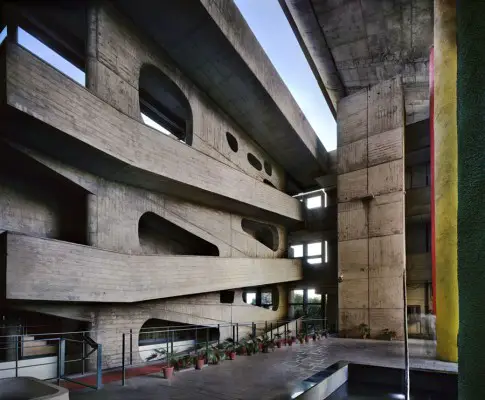
While Pare’s work covers many subjects, Living Laboratory reveals his admiration for Le Corbusier and Konstantin Melnikov, two of the finest and earliest proponents of modernist principles in architecture.
Unité d’habitation, Marseilles, 1946-52. View of the terrace roof, the pool and the sea © Richard Pare, 2011
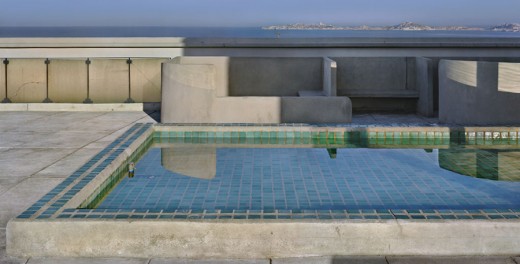
A prolific creator over six decades, Le Corbusier (1887-1965) revolutionised the ways in which we inhabit spaces, reinventing the idea of the house, designing radical furniture, vast urban planning schemes and the design of whole cities. His use of open-plan spaces, terrace gardens, horizontal windows and light-filled interiors created iconic and immediately recognisable buildings, among them the Villa Savoye outside Paris, Chapelle Notre-Dame du Haut in Eastern France, L’Unite’ d’Habitation in Marseille and the Capitol Complex in Chandigarh, India.
Richard Pare’s obvious delight in the detail and poetics of Le Corbusier’s architecture creates new and vital views of buildings which are so well known that they could easily lead to clichéd photography.
Small cabanon, Roquebrune-Cap-Martin, 1952. View of the interior © Richard Pare, 2012
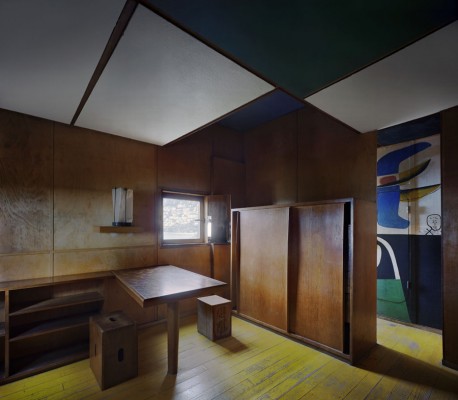
Small cabanon, Roquebrune-Cap-Martin, 1952. View of the window facing the sea © Richard Pare, 2012
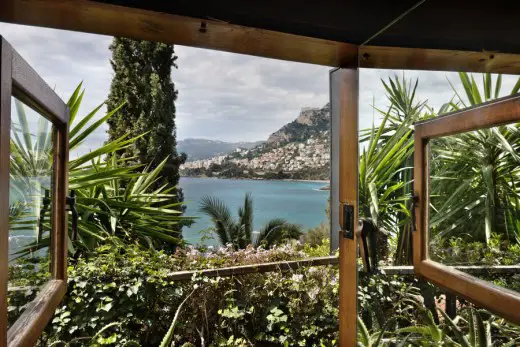
Konstantin Melnikov (1890-1974) was a Russian modernist architect whose work emerged during a period, of little more than a decade, when architects were endeavouring to establish a new architecture for a new age.
The social ferment of the time made it possible for a handful of architects to design and build a number of structures that have had considerable influence on the architectural thinking of succeeding generations all over the world, in spite of the fact that the modernist experiment was snuffed out by the regime under Stalin. Even today, Melnikov’s buildings remain radical and innovative, revealing a courageous individualism that was both his genius and downfall.
Melnikov house 1927-31, Moscow, Russia
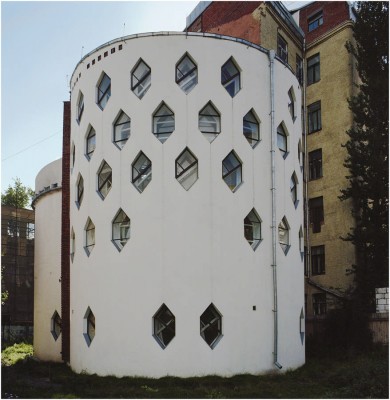
Perhaps the most significant of Melnikov’s buildings was the house he built for himself, which also served as an experimental studio and a personal investigation into the idea of the house. Melnikov’s ingenious use of space, even within the confines of his very limited budget, is emphasised by Pare’s sensitive and subtle approach.
His images of Melnikov’s house are especially poignant, becoming one of the final sets of images made during the life of Melnikov’s son, who gave over the majority of his life to defending his father’s legacy. The fate of the building remains precarious, locked in a battle of wills between members of the family, private interests and the government.
Melnikov house 1927-31, Moscow, Russia
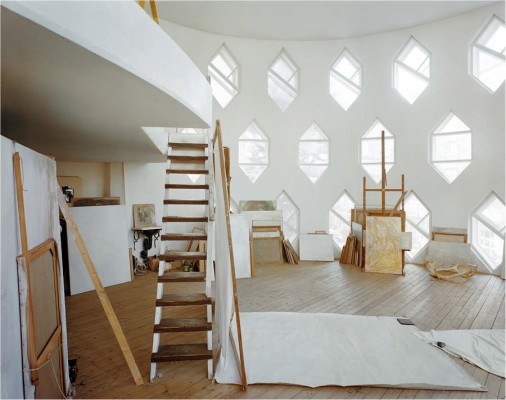
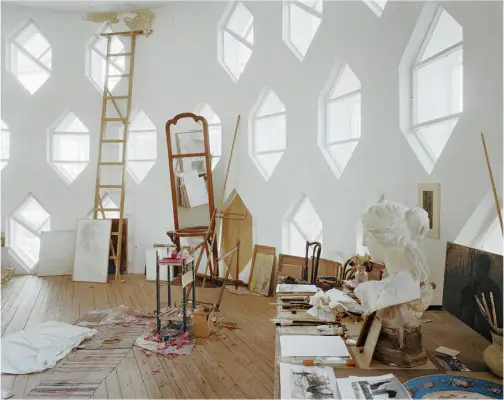
Carol Swords, Gallery Programmer, said “Richard Pare’s appreciation of Le Corbusier and Konstantin Melnikov’s work is shown by the care with which he creates his images. His photographs are completely enveloping, leading to suspended disbelief, as one is transported momentarily to their settings. Pare’s comprehensive quest to document these modernist architects’ careers has led him to create memorable work which is not to be missed.”
Melnikov house 1927-31, Moscow, Russia
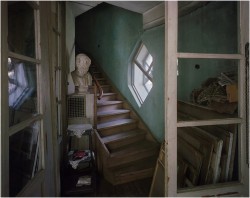
PM Gallery – Visitor Information
Admission is free to all visitors.
PM Gallery & Pitzhanger Manor, Walpole Park, Mattock Lane, Ealing, London W5 5EQ
Opening Times: Tuesday-Friday 1-5pm; Saturday 11am-5pm; Closed Sunday & Monday.
FREE Gallery Tour: 2pm, Saturday 11 February 2012. Please join us for an informal tour of the exhibition with curator Gaia Persico. No need to book.
Further visitor information www.ealing.gov.uk/pmgalleryandhouse 020 8567 1227
Travel: Trains & tube to Ealing Broadway. Buses 207, 65 & 83.
Pitzhanger Manor, Ealing; Conjectural East and West elevations as Sir John Soane, 1800-1810:
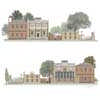
image from architect
The Project – Pitzhanger Manor, Ealing
JHA is working together with Jestico + Whiles to prepare proposals for the restoration and reinterpretation of Pitzhanger Manor (des. by Sir John Soane and George Dance the Younger) for Ealing Council.
Located adjacent to Walpole Park, Ealing, the Manor sits within landscaped gardens. Features in the landscape include a brick and flint entrance archway (grade I listed), a rustic bridge (grade II* listed) and a carved stone bench boundary wall (both grade II listed).
The grounds are connected to the wider parkland with a small lake.
Pitzhanger Manor – Soane Masterpiece to be Transformed
Pitzhanger Manor and Walpole Park in the London Borough of Ealing.
The nationally important Grade-I-listed building, designed by Sir John Soane and George Dance the Younger, will be sensitively restored and transformed into a world-class museum by Jestico + Whiles + Julian Harrap Architects.
Pitzhanger Manor Exhibition : PM Gallery, Ealing, London
Location: Walpole Park, London, England, UK
London Buildings
Contemporary London Architecture Designs
London Architecture Designs – chronological list
London Architectural Tours – tailored UK capital city walks by e-architect
Major project by Julian Harrap:
Neues Museum, Berlin, Germany
David Chipperfield Architects – with conservation specialist Julian Harrap
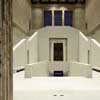
photograph : Ute Zscharnt
Neues Museum : Mies van der Rohe Awards 2011 Winner
New Homes in Southall, Borough of Ealing, west London
Architects: Assael Architecture
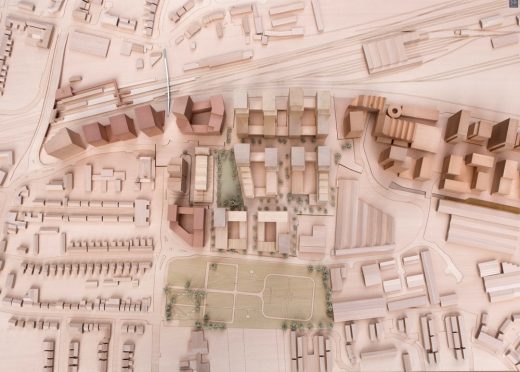
image courtesy of architecture office
New Southall Housing
Comments / photos for the Pitzhanger Manor & Walpole Park – PM Gallery London page welcome

